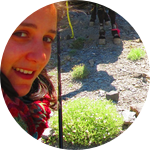About This Project
Biodiversity is not evenly distributed on the planet, but is concentrated in hotspots, with high conservation value. Identifying such areas is biased against areas with difficult access, such as the high mountains of Morocco. Our preliminary assessments indicate that there are many new species that need describing, but to do this involves extensive fieldwork to collect photographic and genetic data. Only with this information can new species be described and conservation status determined.
Ask the Scientists
Join The DiscussionWhat is the context of this research?
There are few species of endemic lizards in the Atlas Mountains found nowhere else in the world, including Atlantolacerta andreanskyi and Quedenfeldtia trachyblepharus. Distribution maps are often limited to the few valleys that have roads leading to them. We have collected blood samples for genetic analyses and they may consist of a complex of similar species that have been overlooked. This has huge conservation implications - there may be several species, some only known from single localities.The forms have not yet been described, meaning that they do not occur in red lists, or have a conservation status. It is imperative that additional data, from other valleys, and including detailed photographs to assess morphological characters, are collected so that they can be formally described.
What is the significance of this project?
We can only begin to protect species once we are aware of their existence. Critical information includes genetic data, population sizes, and distributions. Formal description is extremely important and description of new species often interests local media and people to take a greater care of their biodiversity. Uncovering such diversity can also be used to encourage other scientists to reconsider the importance of a region. Biodiversity hotspots are regions where many species are found but without accurate species lists these maps are biased. So as well as helping to protect the actual species of lizards that are the focus of this project, the work also helps to highlight the importance of this whole unique high mountain environment.
What are the goals of the project?
The primary goal of this project is to fully describe the species diversity of lizards that occur across the high mountains of Morocco, using genetic and morphological characters to identify new forms within A. andreanskyi and Q. trachyblepharus. This will entail carrying out fieldwork across these mountains, hiking to valleys that have no easy access, and taking detailed photographs of lizards captured. Blood samples will be taken for genetic analysis and detection of parasites, and all lizards then released unharmed. Following IUCN guidelines the conservation status of new species will then be assessed. Through our network of collaborators at Universities in Morocco, we will then try to use the description of these new species to encourage other studies of the biodiversity of the region.
Budget
Fieldwork is expensive, but essential for this kind of project. There simply aren’t that many options to fund fieldwork. Examination of photographs and assessment of morphological variation is essentially without further costs. Microscopic examination for blood parasites is also inexpensive.
Endorsed by
Meet the Team
Team Bio
Daniela Rosado is also a biology student, and has been helping me throughout. Dr. Harris is our professor, and has huge experience in identifying reptiles from Morocco. He has already described new species from places as far as the Seychelles and the Cape Verde islands. Through this project we hope to not only gather the necessary data to describe the lizards of these mountains, but also to help shine a light on all the amazing biodiversity that can be found there.
Joana Rodrigues Lopes dos Santos
I'm a biology student at the University of Porto, and like all biologists it's a dream to describe a new species! When I'm not counting the scales of lizards or working in the lab, I love hiking and enjoying the outdoors.
Additional Information
Amazing rewards to help us thank you:
- for every participant, you can help us name the new species! We will send out by doodle a list of potential latin names for the new species, and will allow all our funders to propose their favourites! We will also send all participants an email update when we get back from the field, and others later as we process the data, including photos of the new species!!
- for everyone that funds us by at least 25 dollars we will send you a personalised postcard from Morocco.
- for anyone who is kind enough to fund us by at least 100 dollars we will bring you back a special surprise gift from Morocco. It's a surprise, but don't worry! It will be a really nice one!
References:
- Barata, M., Perera, A., Martínez-Freiría, F. & Harris, D.J. 2012. Cryptic diversity within the Moroccan endemic day geckos Quedenfeldtia (Squamata: Gekkonidae): a multidisciplinary approach using genetic, morphological and ecological data. Biological Jouranl of the Linnean Society, 106 (4), 828-885.
- Barata, M., Carranza, S. & Harris, D.J., 2012. Extreme genetic diversity in the lizard Atlantolacerta andreanskyi (Werner, 1929): A montane cryptic species complex. BMC Evolutionary Biology, 12(1), 167.
- Crottini, A., Harris, D.J., Miralles, A., Glaw, F., Jenkins, R.K.B. et al. 2015. Morphology and molecules reveal two new species of the poorly studied gecko genus Paragehyra (Squamata: Gekkonidae) from Madagascar. Organisms Diversity & Evolution, 15 (1), 175-198.
- Harris, D.J., Damas-Moreira, I., Maia, J.P.M.C & Perera, A. 2014. First report of Hepatozoon (Apicomplexa: Adeleorina) in caecilians, with description of a new species. Journal of Parasitology, 100 (1), 117-120.
- Rosado, D., Harris, D.J., Perera, A., Jorge, F. et al.2015. Moroccan herpetofauna: distribution updates including a DNA barcoding approach. Herpetozoa, 28(3/4).
Project Backers
- 15Backers
- 100%Funded
- $1,400Total Donations
- $93.33Average Donation




